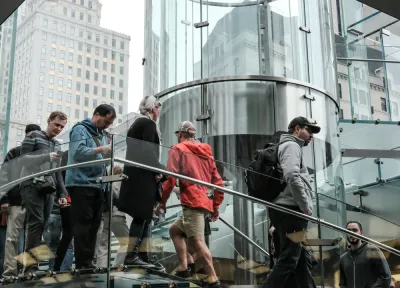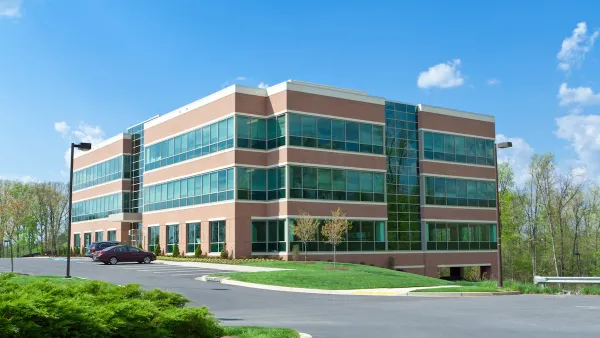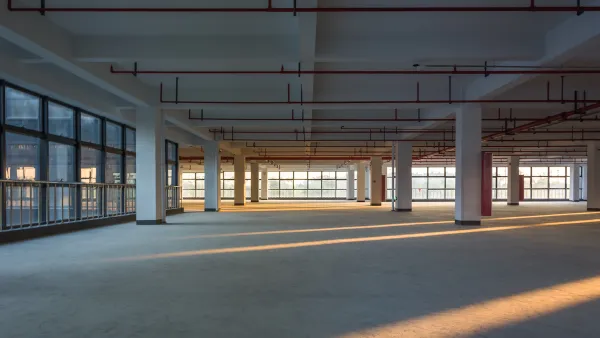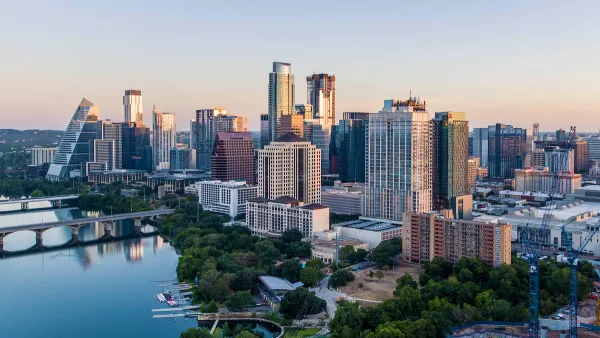As tech firms like Apple expand their satellite offices and remote work opportunities, economists and work experts debate just how much the dispersal made possible by remote work will be held in check by the forces of agglomeration.

In 2012, economist Enrico Moretti published his analysis of economic agglomeration in his widely read The New Geography of Jobs, in which he cited the "Great Divergence" between the places with concentrated talent and jobs and the places left behind by economic development. Now, with remote work opening up new possibilities to live and work in more diverse places, will this model be dismantled?
Moretti doesn't think so, writes Greg Rosalsky. The Berkeley economist "believes that computer screens remain a poor substitute for being face to face. Living and working near one another, he says, allows for random collisions of brains that can spark new ideas. Ideas that would not be generated on Zoom."
"In 2020, a group of economists surveyed 22,500 American workers and executives and found evidence that remote work would 'stick' — but they weren't talking about full-time remote work. The average office worker, they predicted, will work two days a week from home — as Apple is now allowing its workers to do. That's a huge change. But it still means that workers will have to be in the office three days a week. 'If that's the case, the link between place of work and place of residence will stay intact,' Moretti says."
To Moretti, the "gravitational vortex" of agglomeration is too powerful a force to be completely eliminated.
FULL STORY: Why Remote Work Might Not Revolutionize Where We Work

National Parks Layoffs Will Cause Communities to Lose Billions
Thousands of essential park workers were laid off this week, just before the busy spring break season.

Retro-silient?: America’s First “Eco-burb,” The Woodlands Turns 50
A master-planned community north of Houston offers lessons on green infrastructure and resilient design, but falls short of its founder’s lofty affordability and walkability goals.

Delivering for America Plan Will Downgrade Mail Service in at Least 49.5 Percent of Zip Codes
Republican and Democrat lawmakers criticize the plan for its disproportionate negative impact on rural communities.

Test News Post 1
This is a summary

Test News Headline 46
Test for the image on the front page.

Balancing Bombs and Butterflies: How the National Guard Protects a Rare Species
The National Guard at Fort Indiantown Gap uses GIS technology and land management strategies to balance military training with conservation efforts, ensuring the survival of the rare eastern regal fritillary butterfly.
Urban Design for Planners 1: Software Tools
This six-course series explores essential urban design concepts using open source software and equips planners with the tools they need to participate fully in the urban design process.
Planning for Universal Design
Learn the tools for implementing Universal Design in planning regulations.
EMC Planning Group, Inc.
Planetizen
Planetizen
Mpact (formerly Rail~Volution)
Great Falls Development Authority, Inc.
HUDs Office of Policy Development and Research
NYU Wagner Graduate School of Public Service





























